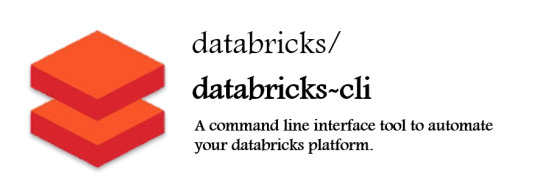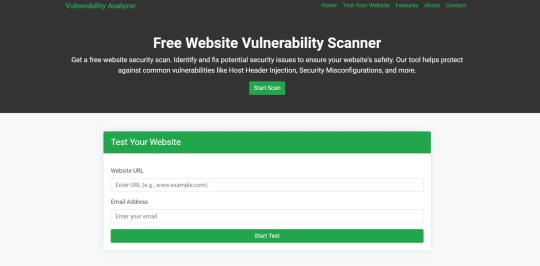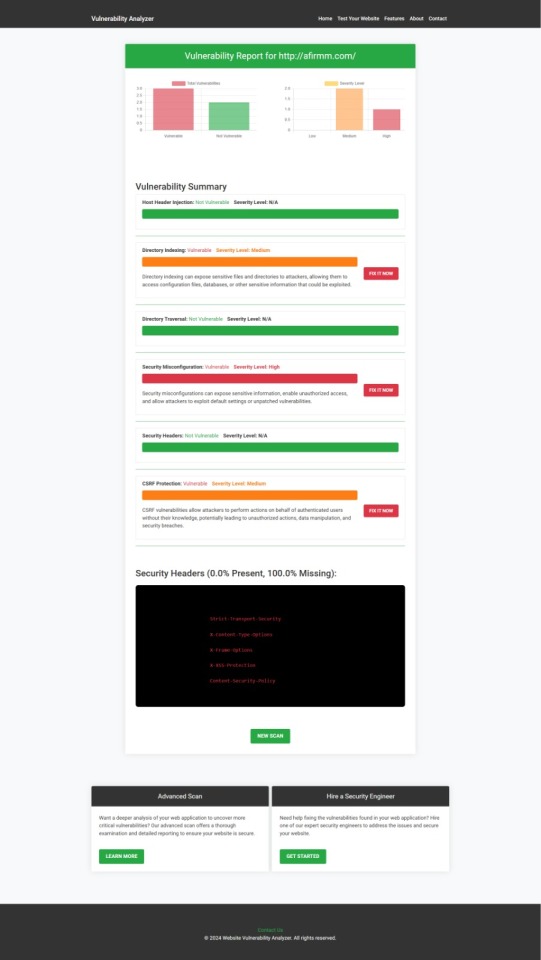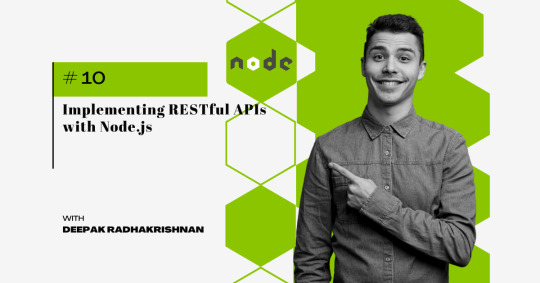#database to rest api
Explore tagged Tumblr posts
Text
APIs (Application Programming Interfaces) are the backbone of modern digital ecosystems. They enable seamless interaction between applications, platforms, and services. However, their exposure makes them a prime attack vector. API security testing identifies vulnerabilities in APIs to ensure data confidentiality, integrity, and availability.
#eCommerce software development services#API testing services#database performance testing#automated testing of REST API
0 notes
Text
Conectando uma Aplicação Spring Boot com Banco de Dados MySQL
O que é o Spring Boot e como ele facilita o desenvolvimento de aplicações Java O Spring Boot é uma extensão do popular framework Spring, projetado para simplificar o processo de desenvolvimento de aplicações Java. Ele elimina a necessidade de configurações complexas e torna o processo de desenvolvimento mais rápido e eficiente. Com Spring Boot, você pode criar aplicações prontas para produção…
#application.properties#autenticação spring boot#conexão com mysql#configurar banco de dados spring boot#controller spring boot#criar aplicação spring boot#criar banco de dados mysql#h2 database#jdbc spring boot#mysql#persistir dados spring boot#repository jpa#repository spring boot#rest api spring boot#spring boot#spring boot configuração#spring boot crud#spring boot exemplo#spring boot exemplo com mysql#spring boot security#spring boot tutorial#spring data jpa#tutorial spring boot mysql#user entity
0 notes
Text
Integrating Django with Elasticsearch: A Comprehensive Guide
Introduction:In modern web applications, search functionality plays a crucial role in enhancing user experience by enabling quick and efficient data retrieval. Elasticsearch, a powerful open-source search and analytics engine, is designed for handling large-scale data and complex queries at lightning speed. Integrating Elasticsearch with Django allows you to build scalable, high-performance…
#Database Indexing#Django#Elasticsearch#Full-Text Search#Python#REST API Integration#Search Engine#web development
0 notes
Text
NPI Database and Credentialing: Ensuring Quality Healthcare
Healthcare credentialing is a meticulous process that validates the qualifications and professional background of healthcare providers to ensure they meet the standards necessary to deliver quality care. The National Provider Identifier (NPI) Database plays a significant role in healthcare credentialing by providing essential information that allows credentialing organizations to verify the identity and qualifications of healthcare professionals. In this article, we will explore the connection between the NPI Database and healthcare credentialing, highlighting its importance in maintaining high-quality healthcare services.
Understanding Credentialing in Healthcare
Healthcare credentialing is a systematic process that healthcare organizations, insurance companies, and regulatory bodies employ to verify the qualifications, competence, and professional background of healthcare providers. This process ensures that the healthcare professionals meet certain standards and have the necessary skills and education to provide safe and effective care to patients.
Credentialing typically involves the verification of various aspects, including:
Medical Education: Confirming that the provider has received the appropriate medical education and training from accredited institutions.
Licensure: Ensuring that the provider holds a valid medical license to practice in their respective state or region.
Certifications: Validating any specialized certifications or board certifications held by the provider in their area of expertise.
Work History: Verifying the provider's employment history, which includes positions held and clinical experience.
Malpractice History: Checking the provider's history for any malpractice claims, disciplinary actions, or legal issues related to their practice.
NPI Number: Confirming the provider's NPI number and the consistency of the information associated with it.
The NPI number is a crucial component in this process as it serves as a unique identifier for healthcare providers, allowing credentialing organizations to cross-reference the information provided by the healthcare professional against the data stored in the NPI Database.
The Role of NPI Database in Healthcare Credentialing
The NPI Database is a comprehensive repository of information about healthcare providers and organizations, each identified by a unique NPI number. This database contains key details such as the provider's name, specialty, practice location, contact information, and any affiliations with healthcare organizations. It serves as a centralized and standardized source of data for all healthcare professionals in the United States.
The NPI Database is invaluable in the credentialing process for several reasons:
1. Verification of Provider Information: Credentialing organizations can use the NPI Database to verify the identity and background of healthcare providers. This includes confirming the provider's name, contact information, and primary specialty.
2. Confirmation of NPI Number: Ensuring that the NPI number provided by the healthcare professional matches the information in the NPI Database is a critical step in confirming their identity and legitimacy.
3. Specialty Validation: Credentialing organizations can use the NPI Database to verify the provider's claimed specialty, ensuring they have the appropriate qualifications and credentials.
4. Provider Affiliations: Information on any affiliations with healthcare organizations or facilities can also be cross-referenced with the NPI Database to confirm the provider's professional connections.
5. Practice Locations: Credentialing organizations can verify the locations where a provider practices, ensuring that they are appropriately licensed to work in those areas.
6. Updated Information: The NPI Database is continually updated, ensuring that the information used for credentialing is accurate and current.
7. Reduction of Errors: The use of standardized NPI numbers reduces the likelihood of clerical errors during the credentialing process.
Benefits of NPI Database in Credentialing
The integration of the NPI Database into the healthcare credentialing process offers several advantages:
1. Efficiency: The NPI Database streamlines the credentialing process by providing readily accessible and standardized information, reducing administrative workload and processing time.
2. Accuracy: The database provides up-to-date and verified information about healthcare providers, minimizing the risk of using outdated or inaccurate details for credentialing.
3. Compliance: By referencing the NPI Database, healthcare organizations can ensure that they are following regulatory requirements for provider verification and credentialing.
4. Cost Reduction: The efficient use of the NPI Database can lead to cost savings for healthcare organizations by reducing manual verification efforts and minimizing errors.
5. Enhanced Patient Safety: By verifying the qualifications and legitimacy of healthcare providers, credentialing helps maintain the quality and safety of patient care.
6. Transparency: The NPI Database provides transparency in the healthcare system, ensuring that patients have access to accurate information about their healthcare providers.
Challenges and Considerations
While the NPI Database greatly benefits healthcare credentialing, there are challenges and considerations to be aware of:
1. Data Accuracy: The NPI Database's accuracy depends on the information provided by healthcare professionals. Credentialing organizations must still ensure that the data they receive is correct.
2. Privacy and Security: Access to the NPI Database should be regulated to protect the privacy and security of providers' information.
3. Verification Complexity: Credentialing is a multifaceted process that goes beyond NPI verification. While the NPI Database is a valuable tool, it should be part of a more comprehensive credentialing process.
Conclusion
The NPI Database serves as a linchpin in the healthcare credentialing process, playing a crucial role in verifying the qualifications, identity, and background of healthcare providers. It enhances the efficiency, accuracy, and transparency of credentialing while contributing to patient safety and the overall quality of healthcare. As the healthcare landscape continues to evolve, the integration of the NPI Database into credentialing processes remains a vital component in ensuring the delivery of high-quality healthcare services.
0 notes
Text
Boost Productivity with Databricks CLI: A Comprehensive Guide
Exciting news! The Databricks CLI has undergone a remarkable transformation, becoming a full-blown revolution. Now, it covers all Databricks REST API operations and supports every Databricks authentication type.
Exciting news! The Databricks CLI has undergone a remarkable transformation, becoming a full-blown revolution. Now, it covers all Databricks REST API operations and supports every Databricks authentication type. The best part? Windows users can join in on the exhilarating journey and install the new CLI with Homebrew, just like macOS and Linux users. This blog aims to provide comprehensive…

View On WordPress
#API#Authentication#Azure Databricks#Azure Databricks Cluster#Azure SQL Database#Cluster#Command prompt#data#Data Analytics#data engineering#Data management#Database#Databricks#Databricks CLI#Databricks CLI commands#Homebrew#JSON#Linux#MacOS#REST API#SQL#SQL database#Windows
0 notes
Text
update to my roadmap of learning https://www.tumblr.com/akaicodes/744920785897111552/roadmap-of-learning-curriculum-related-so-far - 4 months later ♡
• C# - spent ~1 year so far practicing, more comfortable, can build whole sites/programs with little help
• HTML & CSS - started ~5 months ago, confident in both, can style a site without help online, still much to learn
• JavaScript + Vue - Axios - can build “full stack” applications where i do both backend & frontend and host online (love JS!!)
• REST - experienced for 5 months! can build my own REST API, use someone elses with axios & test it thoughoutly with Postman (+Javascript code)
• Unit testing & UI testing - learned so many better ways to unit test & UI test more indeph
• Started leaning Git more with commands
• SQL - can manipulate simple databases and more one from scratch
& huge thanks to my sister @niyacodes for being on this journey with me 💓
++++ I went to a 5 hour exam for all these subjects (+- more) and got the highest grade possible 🥹 (i failed my first programming exam in 1st sem!!!!) ((pic is my favorite after study-snack))

#programming#studying#studyblr#coding#cs student#exam season#100 days of productivity#codeblr#csharp#c
41 notes
·
View notes
Text
Crafting Web Applications For Businesses Which are Responsive,Secure and Scalable.
Hello, Readers!
I’m Nehal Patil, a passionate freelance web developer dedicated to building powerful web applications that solve real-world problems. With a strong command over Spring Boot, React.js, Bootstrap, and MySQL, I specialize in crafting web apps that are not only responsive but also secure, scalable, and production-ready.
Why I Started Freelancing
After gaining experience in full-stack development and completing several personal and academic projects, I realized that I enjoy building things that people actually use. Freelancing allows me to work closely with clients, understand their unique challenges, and deliver custom web solutions that drive impact.
What I Do
I build full-fledged web applications from the ground up. Whether it's a startup MVP, a business dashboard, or an e-commerce platform, I ensure every project meets the following standards:
Responsive: Works seamlessly on mobile, tablet, and desktop.
Secure: Built with best practices to prevent common vulnerabilities.
Scalable: Designed to handle growth—be it users, data, or features.
Maintainable: Clean, modular code that’s easy to understand and extend.
My Tech Stack
I work with a powerful tech stack that ensures modern performance and flexibility:
Frontend: React.js + Bootstrap for sleek, dynamic, and responsive UI
Backend: Spring Boot for robust, production-level REST APIs
Database: MySQL for reliable and structured data management
Bonus: Integration, deployment support, and future-proof architecture
What’s Next?
This blog marks the start of my journey to share insights, tutorials, and case studies from my freelance experiences. Whether you're a business owner looking for a web solution or a fellow developer curious about my workflow—I invite you to follow along!
If you're looking for a developer who can turn your idea into a scalable, secure, and responsive web app, feel free to connect with me.
Thanks for reading, and stay tuned!
2 notes
·
View notes
Text
Integrating Third-Party Tools into Your CRM System: Best Practices
A modern CRM is rarely a standalone tool — it works best when integrated with your business's key platforms like email services, accounting software, marketing tools, and more. But improper integration can lead to data errors, system lags, and security risks.

Here are the best practices developers should follow when integrating third-party tools into CRM systems:
1. Define Clear Integration Objectives
Identify business goals for each integration (e.g., marketing automation, lead capture, billing sync)
Choose tools that align with your CRM’s data model and workflows
Avoid unnecessary integrations that create maintenance overhead
2. Use APIs Wherever Possible
Rely on RESTful or GraphQL APIs for secure, scalable communication
Avoid direct database-level integrations that break during updates
Choose platforms with well-documented and stable APIs
Custom CRM solutions can be built with flexible API gateways
3. Data Mapping and Standardization
Map data fields between systems to prevent mismatches
Use a unified format for customer records, tags, timestamps, and IDs
Normalize values like currencies, time zones, and languages
Maintain a consistent data schema across all tools
4. Authentication and Security
Use OAuth2.0 or token-based authentication for third-party access
Set role-based permissions for which apps access which CRM modules
Monitor access logs for unauthorized activity
Encrypt data during transfer and storage
5. Error Handling and Logging
Create retry logic for API failures and rate limits
Set up alert systems for integration breakdowns
Maintain detailed logs for debugging sync issues
Keep version control of integration scripts and middleware
6. Real-Time vs Batch Syncing
Use real-time sync for critical customer events (e.g., purchases, support tickets)
Use batch syncing for bulk data like marketing lists or invoices
Balance sync frequency to optimize server load
Choose integration frequency based on business impact
7. Scalability and Maintenance
Build integrations as microservices or middleware, not monolithic code
Use message queues (like Kafka or RabbitMQ) for heavy data flow
Design integrations that can evolve with CRM upgrades
Partner with CRM developers for long-term integration strategy
CRM integration experts can future-proof your ecosystem
#CRMIntegration#CRMBestPractices#APIIntegration#CustomCRM#TechStack#ThirdPartyTools#CRMDevelopment#DataSync#SecureIntegration#WorkflowAutomation
2 notes
·
View notes
Text
okay, so- the past three days have been pretty insane, hence no to-do lists. did not know hour-to-hour what in the hell i'd have to do next.
monday morning, there was a company meeting, and it was announced that we were being sold. this was not... the most surprising thing in the world, because about a month ago there was this sudden hasty push by the top to reorganize the business into distinct independent units that didn't depend on shared services. like, what else would the point of doing that be, if not to sell off pieces of the business? sure, they said that wasn't happening, but who the hell was fooled by that?
so i used to do most of my work on these projects for this one specific business unit, building and running a bunch of middleware API integrations for our learning management system. but my boss, who used to be in charge of the dev team generally, got assigned to this totally different unit- and she liked me enough that she pushed really hard to get me reassigned to her unit.
so i was already conflicted about that:
i really like my boss- she's really understanding of my need for flexibility to work on my side projects, she only cares that i get the work done (and even with many side projects, i still consistently exceed expectations and get a full-time workload done ahead of schedule), and she was pushing hard to get me a raise against upper management who'd taken to using covid austerity as an excuse to never give anyone any raises ever. and the team assigned to this unit didn't have any senior devs who could handle a big infrastructure transition, and i'd just become AWS certified, and without someone like me, my coworkers assigned to that unit would be in some hot water. plus, after the transition, maintaining a reduced suite of products would probably be easier day-to-day.
but on the other hand, all my projects in the other business unit, with the LMS- those are pretty vital, and the nature of the contracts with those clients necessitates frequent maintenance and changes. my code for those integrations is bad, for various reasons but mainly that there is no dev environment for testing changes. it's fundamentally about managing production data in databases we don't directly control, so every change has to be done very quickly and carefully, with no room for big refactors to clean things up (and risk breaking stuff). it's a mess, and no one in the other business unit is prepared to take it over. plus- i liked working directly with clients, doing work where if i did the work someone was appreciative of the work. it was motivating!
ultimately, i decided to trust my boss and follow her to the other business unit. we weren't completely splitting from the rest of the business- i'd still be able to train up someone else to take over my projects, we'd still have the shared customer accounts management software, and- crucially- i'd still have the boss who understood my needs and had no interest in squeezing value out of me.
so i went on vacation for a couple weeks right after committing to that decision- and then i came back on monday, and that day they announce we're being sold.

also that my boss is fired and being replaced by someone from the new company.

also that we have two months to completely disconnect all our products from shared service infrastructure and rebuild our own.

also no takesies-backsies, the acquisition agreement included terms that the former company not hire back any of the sold-off employees or even discuss the acquisition with them at all. no chance to react to the new information except to sign the new offer letter by close of business on Wednesday.

i was unhappy about this! can you tell???
so my first thought was- okay, this is bullshit. i still want to work for the LMS people, the LMS people still want me to work for them, there has to be a solve here. so i go to the guy in charge of that division, who also wants me to keep working there, and he says okay i'll have our lawyers look into it.
and then... he gets back to me sounding like a robot, "i am unable to discuss this further with you at this time", which is so obviously out of character for the guy that i can tell legal's thrown the book at him. i talk to legal myself- it's a dead end. they can't- they're unable to even talk about why they can't talk about it, because obviously this deal was engineered to prevent me from doing exactly what i'm trying to do here.
so i go at it from the other angle. president of the sold company, now a wholly-owned for-profit subsidiary of a nonprofit organization (is that even allowed???), i explain to him, hey, this is a mistake, i'm only here because my old boss really wanted me to be on her team, surely you can let me go continue doing my actual job?
nope.

so then i start playing hardball.
the salary they're offering me is, adjusted for inflation, less than the salary i was offered two years ago, which had come with the (entirely failed) non-promise that i'd be bumped up to a certain level very quickly after some formalities re: the employment structure. i explain, in detail, how upset i am with the entire state of affairs- and i threaten to walk, which i am allowed to do. i'm not required to sign their new contract- i'd need to go job-hunting, sure, but i have money in the bank, i can afford to do it, and i could definitely get a better deal somewhere else.
this is a tense situation! my old boss knew this team needed me- but they unceremoniously fired her while she was on vacation, so her opinion doesn't mean dirt to them apparently. it's unclear how vital i really am to this- they could maybe train up one of the other devs to handle the AWS stuff.
and on my side- if i walk, that's it. all that horrible messy code for the LMS stuff- i don't get two months to train someone else up and write documentation and do some housecleaning. i'm gone! my horrific dirty laundry (and hours and hours of regular maintenance work) gets handed off to some other dev who's totally unprepared for it, and that person inevitably puts a curse on my entire family line as retribution for me leaving them holding that intolerable bag. i don't actually want to walk, because then i end up the bad guy in the eyes of people i respect and care about.
(also i'd have to do a job hunt and that shit is so god damn annoying you have no idea you probably have some idea.)
so i tell the guy, look- i can do better. i'm basically starting over doing harder work at an unfamiliar company, and if i'm doing that anyway, why not do it for someone who'll pay me? if you don't give me X amount of money, i'm walking out, and now you don't have an infrastructure guy during the two-month window you have to migrate a shit-ton of infrastructure. i am a serious dude and you can't just fuck with me!
(and inside i'm like:

because oh god i am not a serious dude i am so easily fucked with what if i'm pushing my luck too hard)
and he lets me fuckin' stew. 5:00 on wednesday i need to have either signed a contract or not signed a contract, and he hedges and goes to talk with the higher-ups and makes no promises, and i have no idea whether it's because i scared him or if he's trying to work out how to replace me or what. all this negotiation has been eating my brain for the past couple days and it's coming down to the wire-
and then a couple hours before the deadline he gets back to me with a counteroffer. it's less than i was asking, because that's how negotiations work, but it is more than i was making when i was brought on, by a good 10k.

so now it's on to round two. i'm gonna stick around for this two-month period, make this transition work, clean up my mess and take care of things with my now ex-coworkers- and then if they haven't either proven their management is tolerable or given me a crystal-clear path to advancement, we're back to the standoff- except this time, they'll have a good idea of exactly what it is they stand to lose.
haaaaaaaaaaaaaaah. okay. okay. yeah. so that's dealt with for the time being. i can breathe now. we'll see how it goes. fuck.
27 notes
·
View notes
Text
Introduction to SkillonIT Learning Hub- Empowering Rural Talent With World-Class IT Skills
SkillonIT provides IN-Demand IT courses, connecting Rural talent with rewarding IT skills through affordable, accessible and career-focused education. with Guaranteed pathways to internship and high paying jobs, start with us and step into Opportunities at top Tech-leading Companies. Skillonit Learning Hub, located in Buldhana, Maharashtra, is a leading institute dedicated to equipping individuals with cutting-edge technology skills. With a mission to bridge the digital divide, the institute provides high-quality education in various IT and professional development domains. Skillonit focuses on practical, industry-oriented training, ensuring students gain the expertise needed to thrive in today’s competitive job market. The hub is committed to empowering rural talent and shaping the next generation of skilled professionals.

Courses Offered Skillonit Learning Hub offers a diverse range of courses tailored to industry demands, enabling students to master both technical and professional skills.
Blockchain Development — Smart Contracts (Solidity, Rust, Web3.js, Hardhat) — Blockchain Protocols (Ethereum, Solana, Binance Smart Chain, Fantom) — Decentralized Applications (DApps) Development
Front-End Development — HTML, CSS, JavaScript — Frameworks: React.js, Vue.js, Angular — Responsive Web Design & UI Frameworks (Bootstrap, Tailwind CSS)
Back-End Development — Server-side Programming (Node.js, Python, PHP, Java, .NET) — Database Management (MySQL, MongoDB, Firebase, PostgreSQL) — API Development (RESTful APIs, GraphQL, WebSockets)
Full-Stack Development — Front-End + Back-End Integration — MERN Stack Development — Database, Deployment & DevOps Practice
Mobile App Development — Cross-Platform Development (Flutter, React Native)
Unity 3D Game Development — Game Mechanics & Physics — C# Programming for Game Development — Virtual Reality (VR) & Augmented Reality (AR) Integration
Professional UI/UX Design — User Interface Design (Adobe XD, Figma, Sketch) — User Experience Principles — Prototyping, Wireframing & Usability Testing
Professional Graphic Design — Adobe Photoshop, Illustrator, and CorelDraw — Branding & Logo Design — Digital Art & Visual Communication
Digital Marketing — SEO, SEM, and Social Media Marketing — Content Marketing & Copywriting — Google Ads, Facebook Ads & Analytics
Spoken English — Communication Skills & Public Speaking — Accent Training & Fluency Improvement
Personality Development — Business & Corporate Etiquette — Confidence Building & Interview Preparation — Leadership & Teamwork Skills
Location & Contact : Address : Chhatrapati Tower, Above Maratha Mahila Urban, 3rd Floor, Chikhali Road, Buldhana, Maharashtra, 443001.
Contact us
Conclusion : Skillonit Learning Hub is revolutionizing IT and professional education by making technology and essential career skills accessible to aspiring developers, designers, marketers, and professionals. With a strong emphasis on practical learning, industry exposure, and career opportunities, it stands as a beacon of growth for young talent in Buldhana and beyond. Whether you are looking to build a career in tech, marketing, design, or personal development, Skillonit provides the ideal platform to achieve your goals. Join Our Social Community
Skillonit #Education #ITCourses #Buldhana #Maharashtra #IT #Blockchain #Fullstack #Front-end #Back-end #MobileApp #Unity3d #UIUX #Graphicdesign #Digitalmarketing #SpokenEnglish #Personality #development
2 notes
·
View notes
Text
SQL Injection in RESTful APIs: Identify and Prevent Vulnerabilities
SQL Injection (SQLi) in RESTful APIs: What You Need to Know
RESTful APIs are crucial for modern applications, enabling seamless communication between systems. However, this convenience comes with risks, one of the most common being SQL Injection (SQLi). In this blog, we’ll explore what SQLi is, its impact on APIs, and how to prevent it, complete with a practical coding example to bolster your understanding.

What Is SQL Injection?
SQL Injection is a cyberattack where an attacker injects malicious SQL statements into input fields, exploiting vulnerabilities in an application's database query execution. When it comes to RESTful APIs, SQLi typically targets endpoints that interact with databases.
How Does SQL Injection Affect RESTful APIs?
RESTful APIs are often exposed to public networks, making them prime targets. Attackers exploit insecure endpoints to:
Access or manipulate sensitive data.
Delete or corrupt databases.
Bypass authentication mechanisms.
Example of a Vulnerable API Endpoint
Consider an API endpoint for retrieving user details based on their ID:
from flask import Flask, request import sqlite3
app = Flask(name)
@app.route('/user', methods=['GET']) def get_user(): user_id = request.args.get('id') conn = sqlite3.connect('database.db') cursor = conn.cursor() query = f"SELECT * FROM users WHERE id = {user_id}" # Vulnerable to SQLi cursor.execute(query) result = cursor.fetchone() return {'user': result}, 200
if name == 'main': app.run(debug=True)
Here, the endpoint directly embeds user input (user_id) into the SQL query without validation, making it vulnerable to SQL Injection.
Secure API Endpoint Against SQLi
To prevent SQLi, always use parameterized queries:
@app.route('/user', methods=['GET']) def get_user(): user_id = request.args.get('id') conn = sqlite3.connect('database.db') cursor = conn.cursor() query = "SELECT * FROM users WHERE id = ?" cursor.execute(query, (user_id,)) result = cursor.fetchone() return {'user': result}, 200
In this approach, the user input is sanitized, eliminating the risk of malicious SQL execution.
How Our Free Tool Can Help
Our free Website Security Checker your web application for vulnerabilities, including SQL Injection risks. Below is a screenshot of the tool's homepage:

Upload your website details to receive a comprehensive vulnerability assessment report, as shown below:

These tools help identify potential weaknesses in your APIs and provide actionable insights to secure your system.
Preventing SQLi in RESTful APIs
Here are some tips to secure your APIs:
Use Prepared Statements: Always parameterize your queries.
Implement Input Validation: Sanitize and validate user input.
Regularly Test Your APIs: Use tools like ours to detect vulnerabilities.
Least Privilege Principle: Restrict database permissions to minimize potential damage.
Final Thoughts
SQL Injection is a pervasive threat, especially in RESTful APIs. By understanding the vulnerabilities and implementing best practices, you can significantly reduce the risks. Leverage tools like our free Website Security Checker to stay ahead of potential threats and secure your systems effectively.
Explore our tool now for a quick Website Security Check.
#cyber security#cybersecurity#data security#pentesting#security#sql#the security breach show#sqlserver#rest api
2 notes
·
View notes
Text
Full Stack Testing vs. Full Stack Development: What’s the Difference?

In today’s fast-evolving tech world, buzzwords like Full Stack Development and Full Stack Testing have gained immense popularity. Both roles are vital in the software lifecycle, but they serve very different purposes. Whether you’re a beginner exploring your career options or a professional looking to expand your skills, understanding the differences between Full Stack Testing and Full Stack Development is crucial. Let’s dive into what makes these two roles unique!
What Is Full Stack Development?
Full Stack Development refers to the ability to build an entire software application – from the user interface to the backend logic – using a wide range of tools and technologies. A Full Stack Developer is proficient in both front-end (user-facing) and back-end (server-side) development.
Key Responsibilities of a Full Stack Developer:
Front-End Development: Building the user interface using tools like HTML, CSS, JavaScript, React, or Angular.
Back-End Development: Creating server-side logic using languages like Node.js, Python, Java, or PHP.
Database Management: Handling databases such as MySQL, MongoDB, or PostgreSQL.
API Integration: Connecting applications through RESTful or GraphQL APIs.
Version Control: Using tools like Git for collaborative development.
Skills Required for Full Stack Development:
Proficiency in programming languages (JavaScript, Python, Java, etc.)
Knowledge of web frameworks (React, Django, etc.)
Experience with databases and cloud platforms
Understanding of DevOps tools
In short, a Full Stack Developer handles everything from designing the UI to writing server-side code, ensuring the software runs smoothly.
What Is Full Stack Testing?
Full Stack Testing is all about ensuring quality at every stage of the software development lifecycle. A Full Stack Tester is responsible for testing applications across multiple layers – from front-end UI testing to back-end database validation – ensuring a seamless user experience. They blend manual and automation testing skills to detect issues early and prevent software failures.
Key Responsibilities of a Full Stack Tester:
UI Testing: Ensuring the application looks and behaves correctly on the front end.
API Testing: Validating data flow and communication between services.
Database Testing: Verifying data integrity and backend operations.
Performance Testing: Ensuring the application performs well under load using tools like JMeter.
Automation Testing: Automating repetitive tests with tools like Selenium or Cypress.
Security Testing: Identifying vulnerabilities to prevent cyber-attacks.
Skills Required for Full Stack Testing:
Knowledge of testing tools like Selenium, Postman, JMeter, or TOSCA
Proficiency in both manual and automation testing
Understanding of test frameworks like TestNG or Cucumber
Familiarity with Agile and DevOps practices
Basic knowledge of programming for writing test scripts
A Full Stack Tester plays a critical role in identifying bugs early in the development process and ensuring the software functions flawlessly.
Which Career Path Should You Choose?
The choice between Full Stack Development and Full Stack Testing depends on your interests and strengths:
Choose Full Stack Development if you love coding, creating interfaces, and building software solutions from scratch. This role is ideal for those who enjoy developing creative products and working with both front-end and back-end technologies.
Choose Full Stack Testing if you have a keen eye for detail and enjoy problem-solving by finding bugs and ensuring software quality. If you love automation, performance testing, and working with multiple testing tools, Full Stack Testing is the right path.
Why Both Roles Are Essential :
Both Full Stack Developers and Full Stack Testers are integral to software development. While developers focus on creating functional features, testers ensure that everything runs smoothly and meets user expectations. In an Agile or DevOps environment, these roles often overlap, with testers and developers working closely to deliver high-quality software in shorter cycles.
Final Thoughts :
Whether you opt for Full Stack Testing or Full Stack Development, both fields offer exciting opportunities with tremendous growth potential. With software becoming increasingly complex, the demand for skilled developers and testers is higher than ever.
At TestoMeter Pvt. Ltd., we provide comprehensive training in both Full Stack Development and Full Stack Testing to help you build a future-proof career. Whether you want to build software or ensure its quality, we’ve got the perfect course for you.
Ready to take the next step? Explore our Full Stack courses today and start your journey toward a successful IT career!
This blog not only provides a crisp comparison but also encourages potential students to explore both career paths with TestoMeter.
For more Details :
Interested in kick-starting your Software Developer/Software Tester career? Contact us today or Visit our website for course details, success stories, and more!
🌐visit - https://www.testometer.co.in/
2 notes
·
View notes
Text
Implementing RESTful APIs with Node.js
Learn how to build RESTful APIs with Node.js and Express.js. This guide covers project setup, CRUD operations, database integration, security, and best practices.
Introduction RESTful APIs are a crucial component of modern web applications, enabling seamless communication between different services. Node.js, with its non-blocking, event-driven architecture, is an excellent choice for building scalable and efficient RESTful APIs. This guide will walk you through the process of creating a RESTful API using Node.js and Express.js, covering everything from…

View On WordPress
#API security#CRUD operations#database integration#Express.js#JavaScript#Node.js#RESTful API#web development
0 notes
Text

Use our npi registry web service and Find Healthcare Providers in the USA! Simply sign up and integrate the data from the NPI Database
#npi-data#npi-api#npidataservices#npi database#npi registry#nppes npi registry#npi rest api#npi data rest api#provider data rest api
0 notes
Text
Efficient API development with PHP can greatly enhance your business operations by allowing seamless communication between various applications and platforms. PHP is a flexible and robust language that offers fast performance, scalability, and wide compatibility with databases, making it an ideal choice for building APIs that handle high traffic and large data volumes.
By utilizing PHP for API development, your business can streamline data exchange, integrate third-party services, and improve user experiences across digital platforms. Whether you're building a custom application or expanding an existing system, PHP's extensive library support and strong community make it a reliable choice for crafting efficient, secure APIs.
#api#development#api development#php web development services#php programming#php development company
2 notes
·
View notes
Text
FullStackJava: Mastering Both Ends of the Stack
Java isn't just for backend anymore! As a full stack Java developer, you'll wield powerful tools on both sides:
Frontend:
JavaServer Faces (JSF)
Thymeleaf
Vaadin
Backend:
Spring Boot
Hibernate ORM
RESTful APIs
Database:
JDBC
JPA
Build & Deploy:
Maven/Gradle
Docker
Jenkins
Embrace the versatility. Java full stack = limitless possibilities.
3 notes
·
View notes